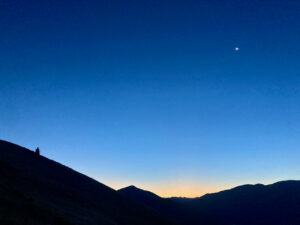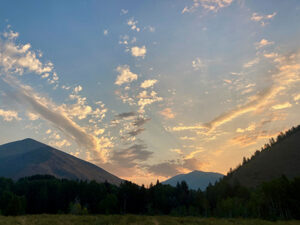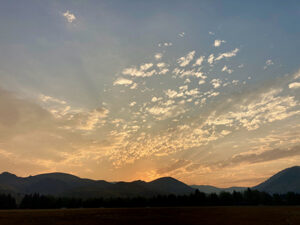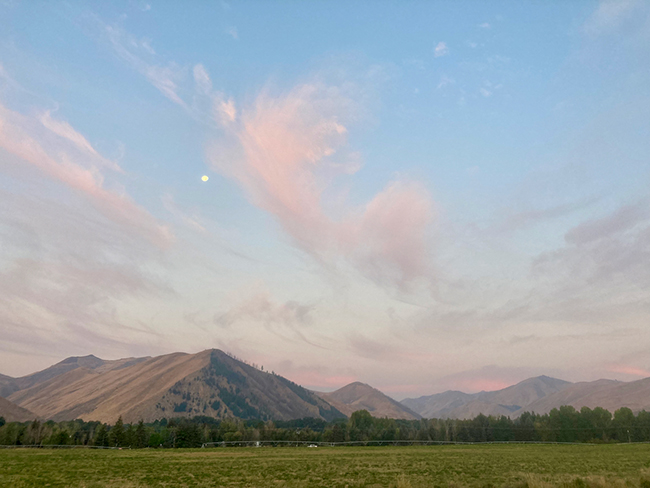BY HANNES THUM
 This year, the fall equinox will occur on September 22. It’s an interesting milestone of the seasons because even though we tend to notice it and celebrate it (or not) as an entire day on the calendar along the lines of Halloween or Thanksgiving, it’s actually an instantaneous moment in time (at around 7:03 p.m. in our time zone, in case you are feeling particular): one of two such annual moments when the Sun is oriented directly over the equator and the whole planet experiences as close to equal amounts of day and night as we ever really get.
This year, the fall equinox will occur on September 22. It’s an interesting milestone of the seasons because even though we tend to notice it and celebrate it (or not) as an entire day on the calendar along the lines of Halloween or Thanksgiving, it’s actually an instantaneous moment in time (at around 7:03 p.m. in our time zone, in case you are feeling particular): one of two such annual moments when the Sun is oriented directly over the equator and the whole planet experiences as close to equal amounts of day and night as we ever really get.
In moments that are not an equinox, the Sun and Earth align such that solar rays are focused more directly on either the Northern Hemisphere (locally, our summer-ish seasons) or the Southern Hemisphere (our winter-ish seasons).
 In a sense, an equinox can be seen as an inflection point, leading us to pause and reflect before moving on. The way that an object thrown upwards pauses before falling back down. How we stop at the end of a sunset until we finally can say that night has arrived. A moment to check and confirm the alignment of Earth and Sun in their beautiful geometry, just like we used to draw them in science class as children. A return home to center between the seasonal arcs of our year.
In a sense, an equinox can be seen as an inflection point, leading us to pause and reflect before moving on. The way that an object thrown upwards pauses before falling back down. How we stop at the end of a sunset until we finally can say that night has arrived. A moment to check and confirm the alignment of Earth and Sun in their beautiful geometry, just like we used to draw them in science class as children. A return home to center between the seasonal arcs of our year.
On the other hand, there’s clearly no pause at all. The planets continue tilting and hurling around the Sun, while we all spin and twist in the grand rotations of our galaxy. Movement and distances on a scale that we can’t even really define or imagine. In this sense, the equinox feels hardly worth a mention.
Pause or no pause, the fall equinox marks a time of transition in a lot of ways. And of transformation — the time of year when nighttime exceeds daytime and darkness begins to become a larger part of our lives.
 The pace of change in our natural systems is not uniform across space and time. Change happens more quickly and dramatically at certain times and it does so around the equinoxes: the leaves, which haven’t really begun to turn, will do so soon and will do so rapidly and the process will be over before we know it and the frost on blades of grass will soon become regular as clear, cold nights arrive. The movement of animals across the landscape will intensify.
The pace of change in our natural systems is not uniform across space and time. Change happens more quickly and dramatically at certain times and it does so around the equinoxes: the leaves, which haven’t really begun to turn, will do so soon and will do so rapidly and the process will be over before we know it and the frost on blades of grass will soon become regular as clear, cold nights arrive. The movement of animals across the landscape will intensify.
The light itself also seems to change noticeably at this time of year. The angle of sunlight across the land is different as the sun crosses lower in the sky each day. Twilight hours linger and are more drawn out. New colors show up in the sky at sunrise. I’m distracted on a morning walk and my commute to work takes longer than usual. The cool air is already a gift after the last months of heat and haze.
This time of year — it stretches on forever or it’s over in an instant.



